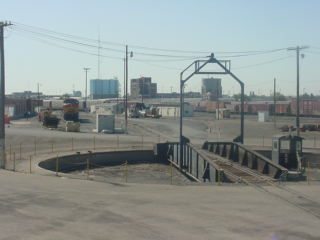
I walked across the street to look at the old Santa Fe turntable which was originally 54 feet but expanded to 90 feet as of 1973. This is all that remains of the eight-stall roundhouse complex, which was built to a common plan dating from July 1881. Five were removed in 1956 and the remaining three demolished in 1987.
At 10:45 AM, I walked the three-tenths of a mile to the Railroad and Transportation Museum of El Paso and waited for it to open.
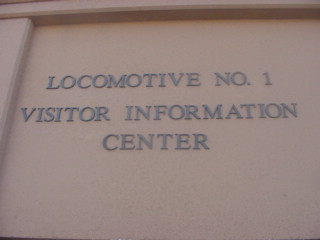
The sign for the museum which operates an exhibit adjacent to historic 1857 locomotive No. 1 of the El Paso & Southwestern located in the Union Plaza Transit Terminal. Displays demonstrate how transportation enhanced the development of business and industry in this region. In addition to an education program, the museum will maintain a library, a study center and an oral history collection.
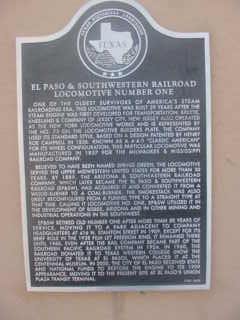
The State of Texas sign giving the history of El Paso and Southwestern Railroad's Locomotive Number One.
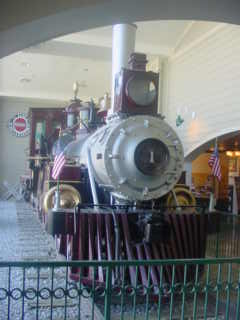
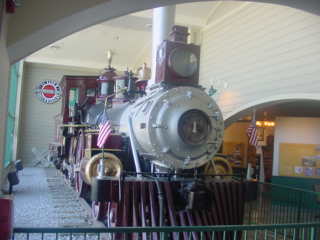
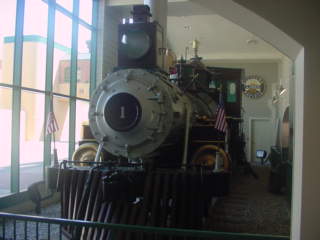
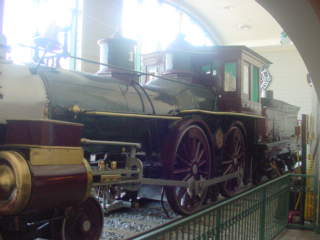
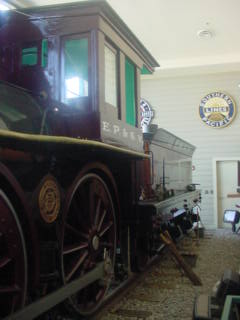
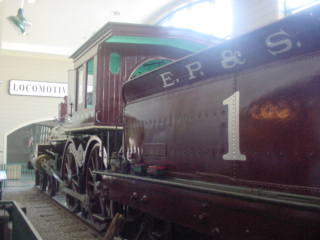
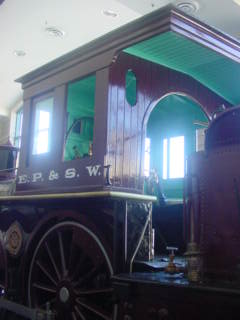
El Paso & Southwestern Railroad wood-burning 4-4-0 1, ex. Arizona and Southeastern Railroad 1, 1889, exx. Milwaukee & Prairie du Chien Railway Company 111 1861, nee Milwaukee & Mississippi Railroad Company 40 "Spring Green" built by Breese, Kneeland, and Company of Jersey City, New Jersey in 1857. It is the only locomotive built by that firm still in existence.
The Milwaukee & Mississippi became the Milwaukee & Prairie du Chien Railway Company in 1861 when it was bought by the Milwaukee & St Paul Railroad in 1867, later becoming the Chicago, Milwaukee & St. Paul Railroad in 1874. When it became El Paso and Southwestern, it was probably converted to burn coal and used to move mine and mill supplies and products when it arrived in El Paso in 1902. The locomotive was retired in 1903 and around 1909 was overhauled, painted and put on display in Downtown El Paso at the intersection of Stanton and Franklin streets.
In 1960, the Southern Pacific Railroad, which had taken over the El Paso and Southwestern in 1924, donated the locomotive to the University of Texas at El Paso who placed it on display near the Centennial Museum and Chihuahuan Desert Gardens. In 2001, more than 1.1 million dollars of Texas State Transportation Commission and local matching funds were allocated to restore the steam engine and it was placed in the Railroad and Transportation Museum of El Paso in 2003.
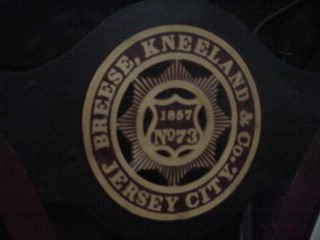
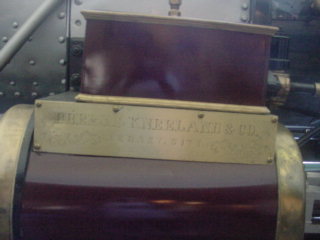
The builder's plates.
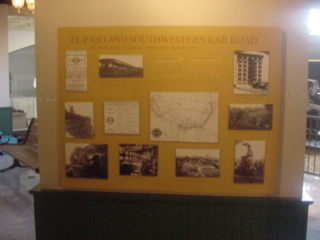
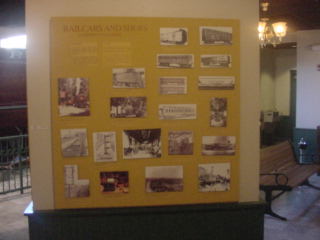
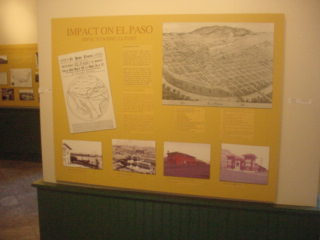
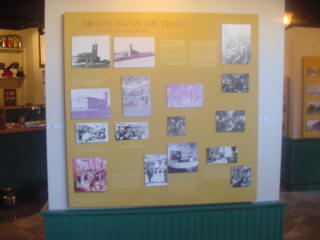
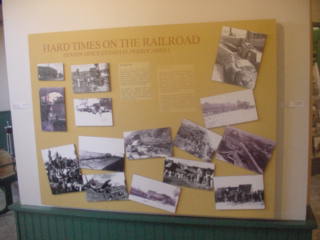
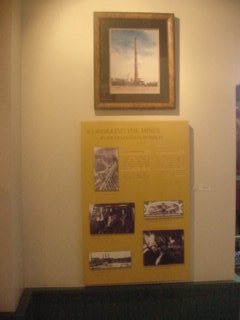
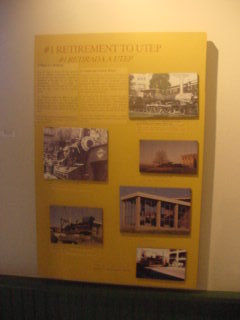
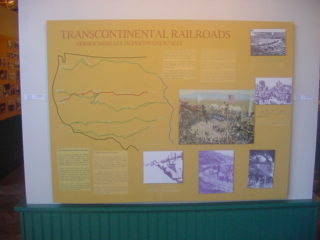
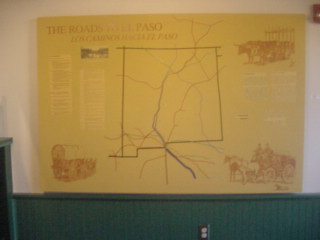
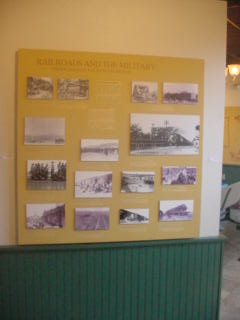
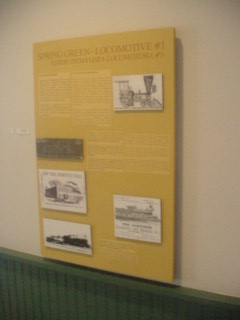
Display boards of El Paso and Western Texas transportation History.
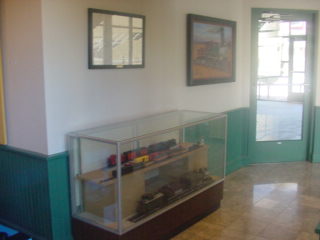
Glass display case of trains.
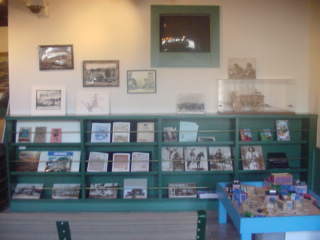
Books for sale.
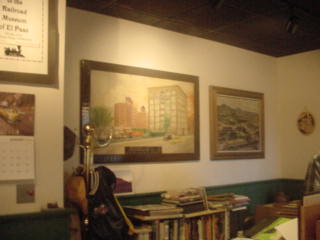
Pictures behind the work area of the museum.
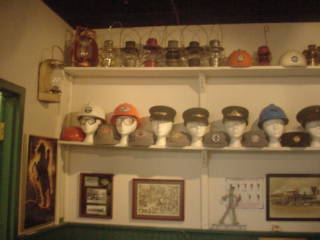
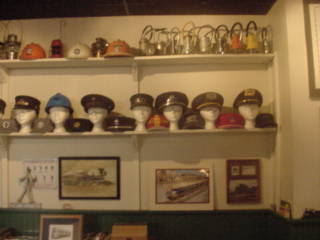
A variety of conductor's hats.
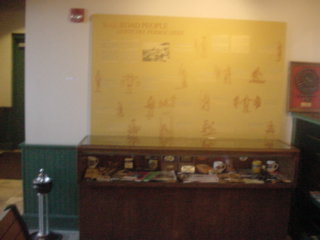
Timetables on display.
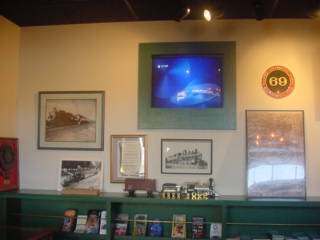
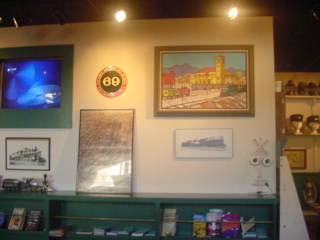
Pictures above the complimentary items in this unique museum.
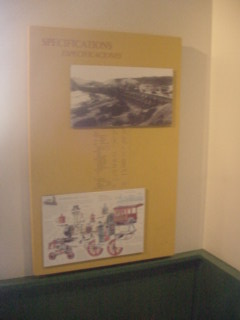
Steam locomotive specification diagram. The museum was showing two DVDs, the first on Western Texas transportation through the years and the other on Streetcars of El Paso and I learned plenty of new information about El Paso history. I was then was given a map of downtown El Paso with all the railroad points marked.
A Historic Railroad Tour of El PasoRon Dawson of the Paso del Norte Streetcar Preservation Society offered to drive me around to see the historic railroad sites.
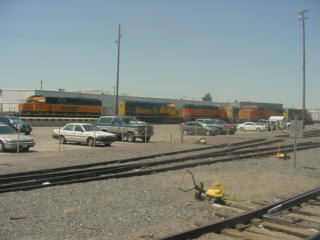
I found where all the BNSF power is stored.
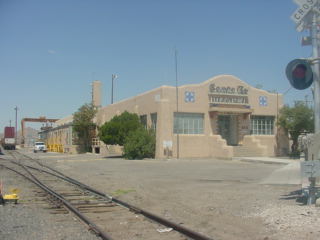
The Santa Fe freight station built in 1881.
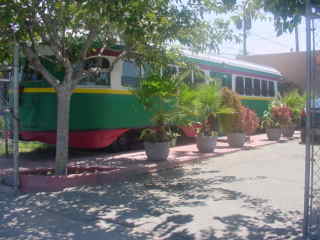
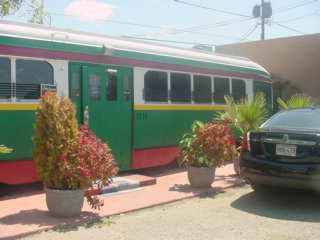
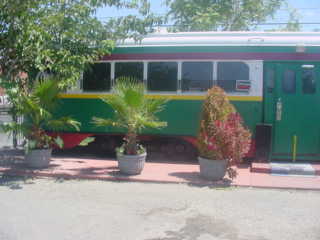
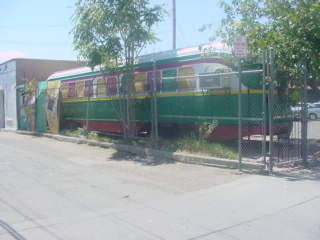
El Paso City Lines PCC car 1510 nee San Diego Electric Railway 517 built by St. Louis Car Company in 1937. It operated in San Diego until 1950 when it was acquired by El Paso City Lines and worked there until 1986 when it was acquired by a private owner.
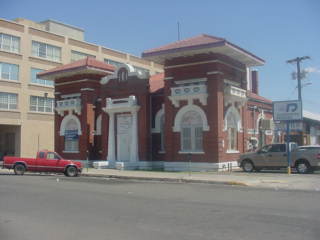
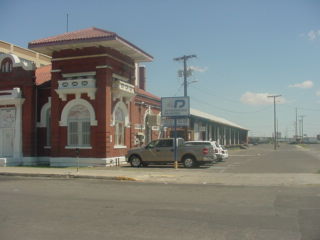
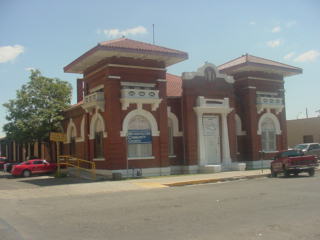
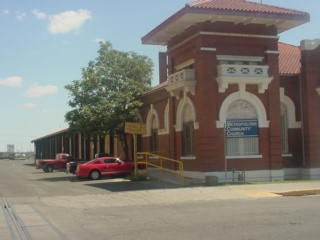
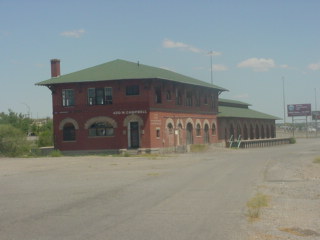
The Texas & Pacific El Paso freight house built in 1905, now the Metropolitan Community Church.
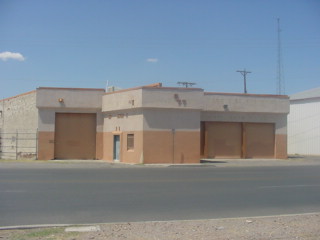
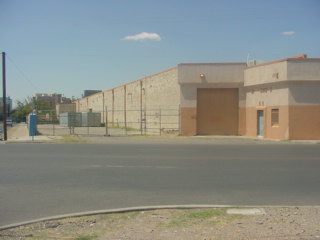
The El Paso Electric Railway streetcar barn built in 1910. El Paso Electric's more than 100-year history of providing electrical power to the citizens of the El Paso area officially began on August 30, 1901, as El Paso Electric Railway Company. In the beginning, the emphasis was almost totally on transportation. The coming of the railroads stirred some of the town's more progressive citizens to action. Seeing the need for more adequate local transportation facilities, a group of men headed by General Anson Mills, who laid out El Paso's streets and designed the Mills Building, obtained a charter for the El Paso Street Railway Company and the privilege of operating a mule-drawn streetcar system. The system began service in 1882. It expanded, prospered, and routes diversified, but most of the traffic was between El Paso and Juárez.
The mule-car system was doubtlessly considered modern when established. However, as the community grew, it aspired to more modern conveniences. From the East came reports of electric lighting and streetcars that got their power from overhead electric trolley wires. Some El Pasoans believed that mule cars were too slow for an up-and-coming city. The move to electric cars took place in an elaborate international ceremony in which Mandy the mule was given a ride on a flat car over the new streetcar route between Juárez and El Paso. Mandy pulled one of the last remaining mule-drawn streetcars which was for many years displayed in Cleveland Square in downtown El Paso. Cleveland Square was located on the current site of the El Paso Museum of History and the re-modeled and expanded El Paso Library.
Electric streetcar routes branched out in all directions from downtown leading to Fort Bliss and Government Hill and to the Mesa Street route. Also, in the same era, there were other developments in power and light. In 1883, an experiment in the use of batteries as a source of electrical current was unsuccessful commercially, and three years later a small direct generating plant was erected. This was enough to provide current for a few arc street lights and stores. Then-Mayor Joseph Magoffin and the city council were petitioned by a group of citizens to organize a company under the name of Brush Electric Light Company of El Paso. The first electric light in use in El Paso was said to be Rothschild and Marcuse Jewelers downtown.
By 1890, Zach T. White, prominent El Paso pioneer, had assumed command of the electrical energy business and had new generating equipment installed at Third and Chihuahua Streets. The use of incandescent lamps began in El Paso stores and homes. The state of Texas issued a charter to the International Light and Power Company in 1889 for the construction and operation of a generating plant to supply power, not only to the city of El Paso and neighboring communities on the northern side of the Rio Grande, but also to Juárez. A management contract was negotiated with Stone and Webster Subsidiary Engineers Public Service Company in 1902 that brought El Paso Electric Railway Company its first engineering and financial assistance, an essential part of the utility's growth.
El Paso Electric Railway Company purchased International Light and Power Company in 1905 and the electric portion of El Paso Gas and Electric Company in 1914. As the electric systems grew, alternating current replaced direct current except for streetcars and some elevators.
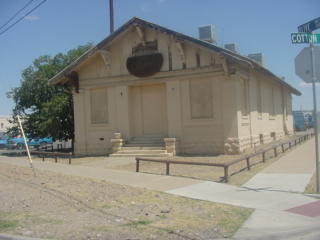
Across the street is the former foreman house/offices.
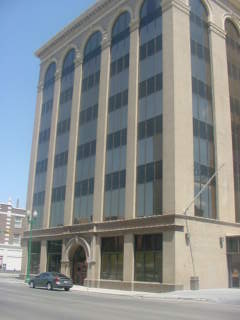
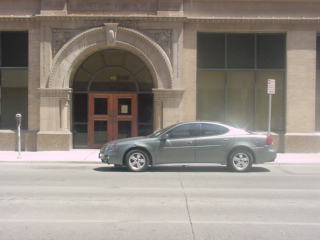
The El Paso and Southwestern office building. Ron took me back to the viewing area near the station and I thanked him for an excellent tour. Now I hoped to have a westbound freight train coming out of the Bataan Memorial Trainway.
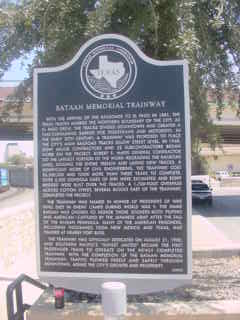
The Texas State sign giving the history of the Bataan Memorial Trainway. With two trains waiting, I needed a westbound to come down the empty track and about thirty minutes later, I spotted a headlight.
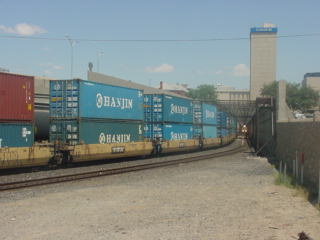
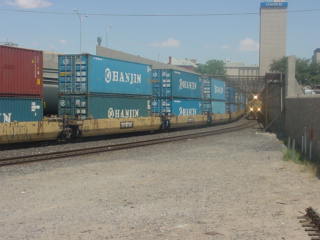
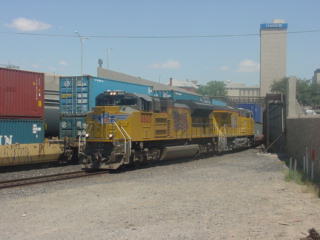
Union Pacific 8600 West was impressive coming through the Trainway.
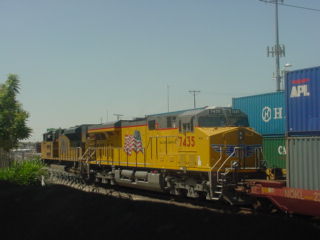
A nice and clean Union Pacific AC45CCTE 7435 built by General Electric in 2009 in the consist. I returned to the station and after calling Julie, Amtrak's automated agent, learnt my train was running late, then found out from the station agent that the westbound Sunset Limited was running fifteen minutes late out of Sanderson then east of Alpine, they encountered a broken rail that caused more than a two-hour delay.
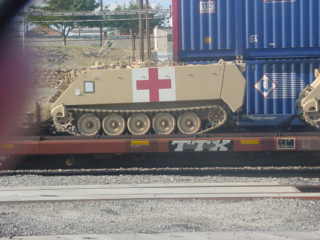
Later a westbound train of military equipment passed through then about 6:30 PM, the assistant conductor took my ticket as we had an updated arrival of 6:45 PM arrival. I walked out to the open gate and waited for the Sunset Limited.
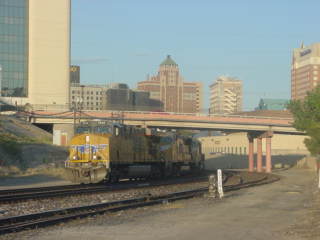
Union Pacific 5540 West exited the Bataan Memorial Trainway when our train was due then at 7:12 PM, I heard rumbling coming from the Trainway and soon my Amtrak train came into view.
Sunset Limited 1 8/29/2009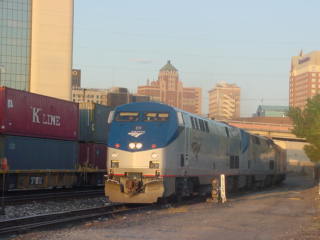
The Sunset Limited arrived with a consist of P42DCs 89 and 67, baggage 1248, transition 39031, sleeper 32005, diner 38064, lounge 33037, coaches 31007, 34065 and 34045 and sleeper 32113 "Vermont". I boarded "Vermont" and had Room 2 and was given a 7:30 dinner reservation. I stored my luggage and waited for dinner in the lounge car. We departed at 7:25 PM and at dinner, was seated with two nice ladies as I enjoyed the barbecue beef and Oreo cake for dessert. Afterwards, I watched my "Van Halen Live" DVD before making up the room and calling it a night.
8/30/2009 I arose at 5:40 AM and went to the dining car for breakfast of French Toast and sausage patties.
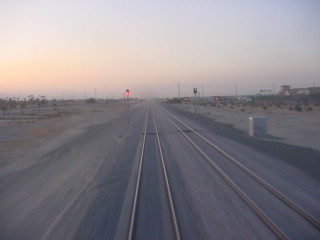
After breakfast I walked back and took this picture as we approached Palm Springs, our fresh air break of the morning.
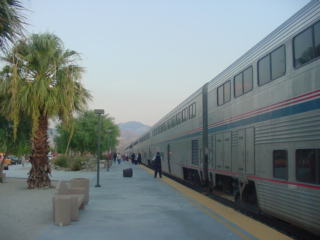
Our Palm Springs station stop. I returned to the room and watched The Rolling Stones' "Ladies and Gentlemen".
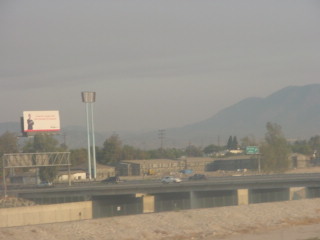
Later the smoke from the Southern California wildfire made this interesting cloud then once the Stones were finished, I watched a Kiss DVD.
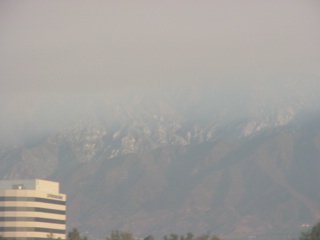
Snow in September, or ash from the fires, created this scene on Mount Baldy. The train went through San Gabriel then through the thick smoke as we ran the final miles to LAUPT, arriving there at 8:38 AM {9:40 AM}, ending another excellent trip on the Sunset Limited. I detrained and walked over to the waiting Metrolink train through the smoky air.
Metrolink 654 8/30/2009I boarded this train using my one-way Amtrak ticket which I was allowed to use through Rail-to-Rail program until the end of August, when single Amtrak tickets will no longer be allowed. After a few minutes of reading the newsletter "Metrolink Affairs", we departed at 8:49 AM and headed south to a world of fresh air back in Santa Ana, arriving there on time, ending another great rail trip to and from El Paso, Texas.
| RETURN TO THE MAIN PAGE |